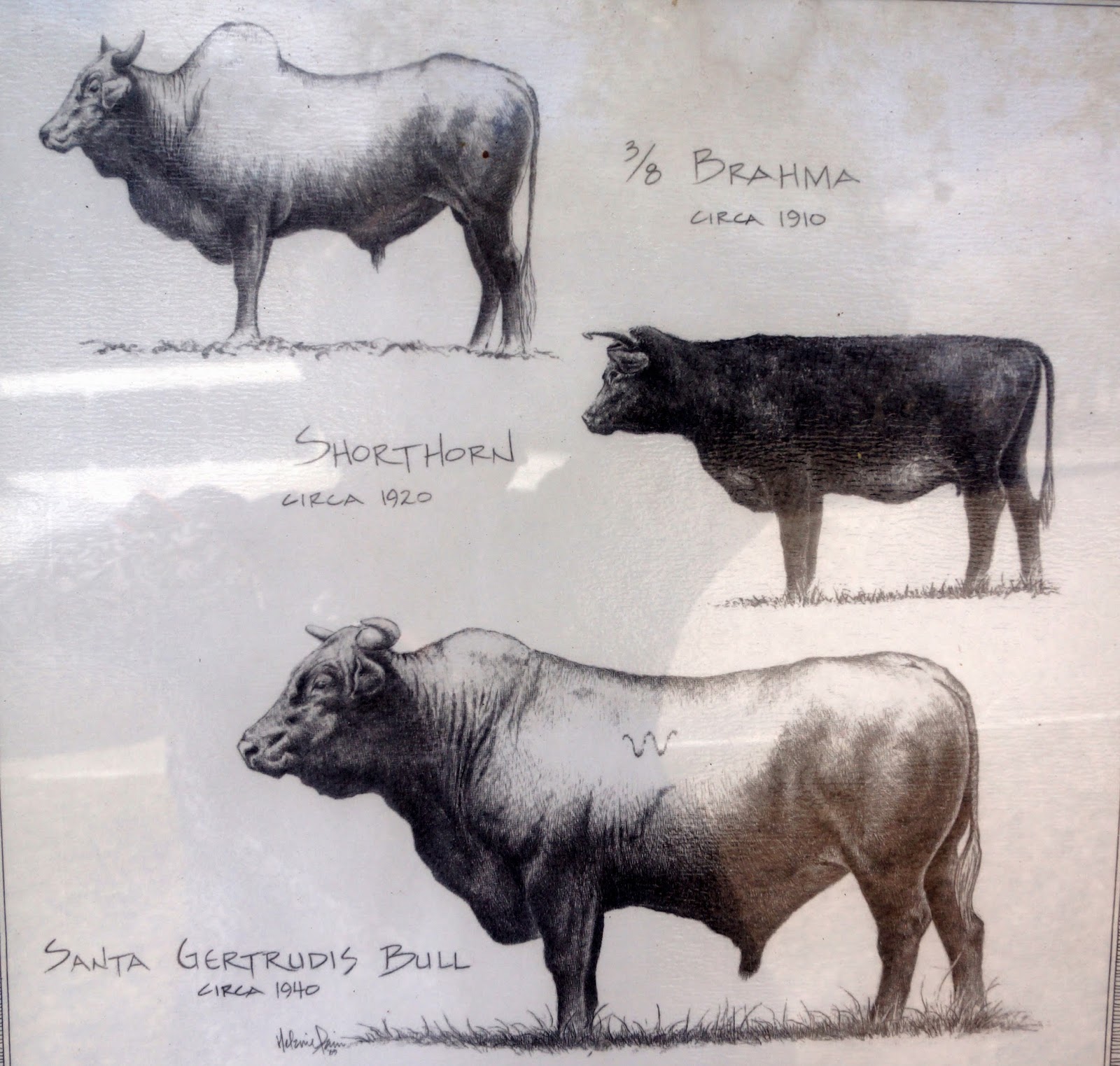Lots of RVers winter at the southernmost part of Texas - in either the Brownsville or the McAllen/Mission area. It's warm, inexpensive and developed enough to have all the comforts of home, plus some great outdoors adventures at South San Padre Island or the many birding sanctuaries within the Rio Grande River Valley. We had been playing with the idea of going down there just to check out the area as well as some of the local RV parks for future reference.
Mission is about three hours away from where we are now in Port Aransas, so we decided to make a two day trip of it. We made reservation at a La Quinta Inn in Mission and left early on Thursday, heading south on the main roads in the interest of time. Our route took us through Kingsville, the home of the
King Ranch, a place we had talked about visiting, but it had slipped our minds. So here we had the opportunity to stop and take a look.
This Longhorn was in the greeting party at the Visitors' Center. We learned that Longhorns are basically raised for nostalgic or historical reasons. They have little commercial value as the meat is tough.
He was very friendly and gave my camera a kiss.
The only way to see the King Ranch is to take an 1 1/2 hour van tour around the historic parts of the ranch, which we thought we could squeeze in. The tour drove us around one relatively small section of their vast local holdings, and our guide told us the story of Richard King, founder of the ranch. Below you can see the top of the King Ranch home above the treetops.
At 825,00 acres, or 1,289 square miles, the King Ranch in Texas is one of the largest ranches in the USA, though its property is not contiguous. We got the scoop on how Richard King started out, the development of cattle herds, the working quarter horses and thoroughbred racers, and more stories about his family, employees and some of the original buildings. Richard King developed a breed of cattle by crossing Brahmas with Shorthorns, resulting in a hardy breed well suited for the hot environment in Texas, called the Santa Gerturdis.
It was such a large breed that the meat packers and grocers rejected it because the cuts of meat were too large for their equipment and meat trays. So he went on to develop a second breed, the
Santa Cruz, which was smaller and is still raised today on the ranch. Here you see a few of them with the King Ranch brand, the Running W, on it.
The King Ranch cowboys of today are not like what we imagine based on old movies. They are equipped with a pickup truck, a trailer for their horse, and a cell phone. There are even port-a-potties scattered around the ranch for the cowboys' convenience. Each cowboy is responsible for ten thousand acres.
King's original cowboys came from a town in Mexico where he bought his first cattle. King basically hired the whole town to come work for him. They and their descendants who still work on the ranch are called Kinenos (with a tilda over the second N).
It seems that their employees of every stripe lived in Ranch housing (and still do!), making the ranch like a self-sufficient community. They rose their own sheep and wove distinctive blankets with the King Ranch brand on them.
The King Ranch brand is known world wide. Even Ford Motors partnered with them to offer a line of King Ranch trucks. Among other things, our tour guide explained to us about brands and shared some stories about the origin of the Running W. Bottom line - no one really knows how King came up with it.
A few of the older buildings are modeled after The Alamo, like this stable below.
All that we saw is only a tiny representative and historical portion of the immense King Ranch corporation. King Ranch not only raises cattle and horses, but they have branched into all kinds of agribusiness, including sugarcane, cotton, milo, citrus, sod, pecans in Texas and in Florida. They also own a John Deer dealership near Kingsville, a leather goods factory and store, and a publishing house. They have branched out into using their land for hunting and ecotourism. Check out their
website for lots more information.
Next we'll tell you about birding in the "Tip-o-Texas."



























